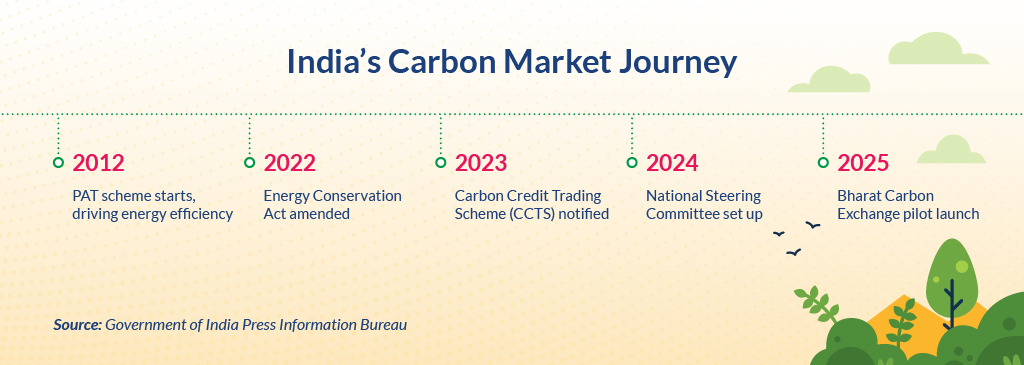Sustainability is moving from the sidelines to the centre of banking strategy.
What once sat in the margins of ESG reports is moving to the centre of credit risk: the carbon profile of borrowers.
For Indian banks, this shift is becoming a boardroom priority.
With the government greenlighting voluntary carbon-offset trading under the newly minted Carbon Credit Trading Scheme and setting industry-specific GHG targets for 2025–26 banks are facing a strategic inflection point.
As emissions data moves to the centre of lending decisions, the real question is: can financial institutions deploy AI fast enough to turn sustainability into a competitive edge?
From Orchards to Offsets: Banking on Carbon Credits
Consider NABARD’s pilot in Karnataka, where 3,500 mango farmers cultivating under-five-year saplings are expected to earn ₹20,000–40,000 per hectare through carbon removal credits, once compliance and audit frictions are resolved.
Simultaneously, the Government of India’s approval in March 2025 of eight voluntary methodologies including renewable energy, green hydrogen, energy-efficiency and mangrove afforestation under the Carbon Credit Trading Scheme (CCTS) opens a scientific, bank-able route for green projects.
Real-Time Carbon Tracking as a Sustainable Banking Asset
Here’s where AI becomes a green finance game-changer. With the Bharat Carbon Exchange and CCTS demanding robust MRV (Measurement, Reporting & Verification), banks can deploy AI to:
- Continuously estimate borrowers’ emissions intensity (in practice and in real time)
- Automate ESG-risk scoring to flag compliance gaps swiftly
- Align lending rates to carbon performance, unlocking carbon-linked loans and dynamic pricing
This is sustainable banking where green finance becomes both measurable and marketable.
Clayfin Enables The Digital Green Through Smarter PFM Tools
Sustainability begins with awareness. Clayfin’s PFM platform gives banks the ability to show customers the environmental impact of their financial behaviour.
Our smart PFM dashboards track and display a user’s carbon footprint per transaction, helping customers and banks understand the emissions linked to everyday spending. Charts make it easy to visualise patterns and the broader environmental effect.
AI-driven transaction categorization ensures expenses and income are automatically organized, giving banks clean, actionable data to support reporting or ESG-related initiatives.
Integrated into mobile banking applications, these features let users access carbon insights alongside their financial overview—making sustainability transparent, understandable, and part of everyday banking.

